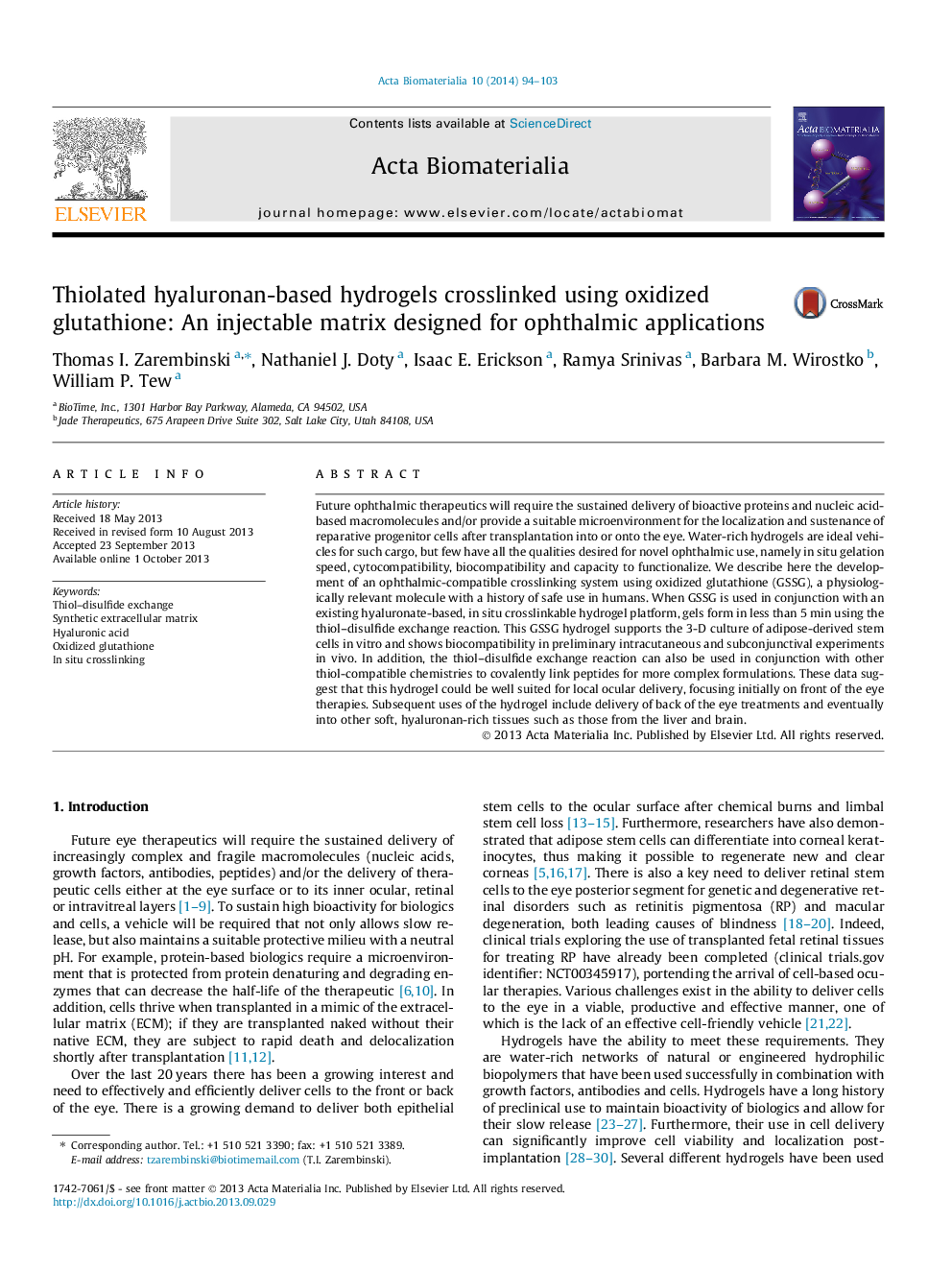| Article ID | Journal | Published Year | Pages | File Type |
|---|---|---|---|---|
| 10159391 | Acta Biomaterialia | 2014 | 10 Pages |
Abstract
Future ophthalmic therapeutics will require the sustained delivery of bioactive proteins and nucleic acid-based macromolecules and/or provide a suitable microenvironment for the localization and sustenance of reparative progenitor cells after transplantation into or onto the eye. Water-rich hydrogels are ideal vehicles for such cargo, but few have all the qualities desired for novel ophthalmic use, namely in situ gelation speed, cytocompatibility, biocompatibility and capacity to functionalize. We describe here the development of an ophthalmic-compatible crosslinking system using oxidized glutathione (GSSG), a physiologically relevant molecule with a history of safe use in humans. When GSSG is used in conjunction with an existing hyaluronate-based, in situ crosslinkable hydrogel platform, gels form in less than 5Â min using the thiol-disulfide exchange reaction. This GSSG hydrogel supports the 3-D culture of adipose-derived stem cells in vitro and shows biocompatibility in preliminary intracutaneous and subconjunctival experiments in vivo. In addition, the thiol-disulfide exchange reaction can also be used in conjunction with other thiol-compatible chemistries to covalently link peptides for more complex formulations. These data suggest that this hydrogel could be well suited for local ocular delivery, focusing initially on front of the eye therapies. Subsequent uses of the hydrogel include delivery of back of the eye treatments and eventually into other soft, hyaluronan-rich tissues such as those from the liver and brain.
Keywords
Related Topics
Physical Sciences and Engineering
Chemical Engineering
Bioengineering
Authors
Thomas I. Zarembinski, Nathaniel J. Doty, Isaac E. Erickson, Ramya Srinivas, Barbara M. Wirostko, William P. Tew,
